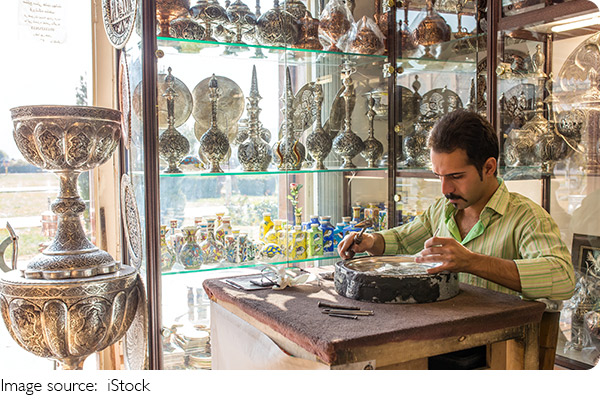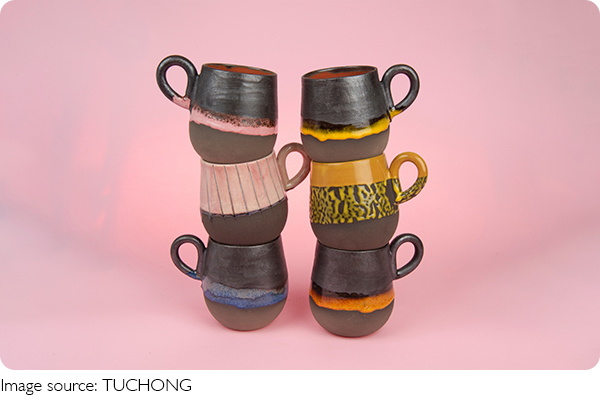Clay to Cups: Art Unveiled!

Greetings, Lykkers! Ceramics have been an essential part of human history for thousands of years, from the ancient vessels used for storing food to the intricate, modern designs adorning our homes today.
Handmade ceramics, in particular, carry a sense of craftsmanship and individuality that mass-produced items often lack.
But what goes into making a ceramic cup, bowl, or plate? From the humble beginnings of raw clay to the moment it reaches its final glazed form, the journey of ceramics is both an art and a science!
1. The Heart of Ceramics: The Clay
Every ceramic piece begins with the most fundamental material—clay. The type of clay chosen for a piece can dramatically influence its texture, color, and final result.
Earthenware: This is the most common type of clay used in ceramics. It's easy to work with and tends to have a porous quality that makes it perfect for colorful glazing. Often, earthenware is used for casual cups, plates, and rustic-style mugs.
Stoneware: This clay is known for its durability and is typically used in making items that need to withstand heavy use, such as dinner plates and teapots. It has a smooth texture and a rich, earthy color that makes it perfect for functional art.
Porcelain: Known for its fine texture and translucent finish, porcelain is used for creating delicate items like fine china and artistic sculptures. It requires precise control during the firing process, as it is more prone to cracking than other clays.

2. Shaping the Clay: From Hands to Wheel
Once the clay has been selected, the next step in the process is shaping. This is where the true artistry of ceramics comes into play.
Handbuilding: This ancient technique involves forming clay pieces by hand using various tools, such as a rolling pin, coils, and slabs. It allows for greater freedom in design and can result in pieces with a more organic, rustic look.
Wheel-Throwing: Using a pottery wheel, a potter shapes the clay into a desired form by centering it on the wheel and gradually shaping it with their hands. This method is perfect for creating symmetrical pieces like bowls, mugs, and vases.
3. The Drying Process: Patience Is Key
Once the ceramic piece is shaped, it must be dried carefully before it is fired in the kiln. This stage is crucial because any moisture left in the clay can cause the piece to explode during firing. The drying process involves setting the piece aside in a cool, dry area and allowing it to air-dry slowly. Potters often cover the pieces with plastic to prevent rapid evaporation, which could lead to warping.
4. Firing the Clay: The Kiln's Role
Firing is the process of heating the clay in a kiln to harden it and transform it into a durable ceramic.
Bisque Firing: In the first firing, the clay is heated to a temperature high enough to harden it but not so high that it melts. This process removes any remaining moisture and organic material from the clay. After bisque firing, the clay is now called bisque ware, and it is porous and ready to accept glaze.
Glaze Firing: After the piece is bisque-fired and cooled, it is coated with a glaze, which gives it its color and sheen. The glaze is a mixture of various minerals and chemicals that, when fired at high temperatures, melt into a glass-like coating. The glaze firing process also allows the glaze to bond with the clay, making the piece non-porous and food-safe.

5. The Magic of Glazing: Adding Color and Texture
Glazing is where ceramics truly come to life. The right glaze can transform a simple clay piece into something visually stunning. There are countless types of glazes, ranging from matte to glossy, and from transparent to opaque. Some glazes crackle in the firing process, creating intricate patterns, while others may have a smooth, uniform finish.
Glazes also provide functional benefits. They make ceramic pieces waterproof, making them suitable for food and drink, and they can enhance the durability of the piece, making it less likely to scratch or stain. Moreover, the glazing process allows for endless creative expression through color, texture, and pattern.
6. The Final Touch: The Beauty of Imperfection
One of the most distinctive features of handmade ceramics is the imperfection. Unlike mass-produced items, each handmade ceramic piece is unique. The small variations in shape, color, and texture are part of what makes ceramics so special. These imperfections add character and a sense of authenticity, making every piece a work of art.
While this may seem like a flaw to some, many ceramicists embrace the idea of wabi-sabi, a Japanese concept that celebrates the beauty in imperfection and transience. This philosophy is often reflected in the handmade ceramics, where each piece tells a story through its unique qualities.
7. Bringing the Finished Piece to Life
Once a ceramic piece is fired, glazed, and cooled, it is ready to be used or displayed. Whether it's a set of cups, a decorative bowl, or a statement vase, handmade ceramics have a timeless appeal that enhances any space.
The artistry involved in creating handmade ceramics goes beyond the technical aspects. Each piece carries the mark of the maker, and its creation is a labor of love. The process is long and involved, but the results are often stunning—functional works of art that bring a touch of individuality and craftsmanship to your everyday life.
The journey of creating ceramics from clay to cup is a delicate balance of art, science, and patience. Each step—shaping, drying, firing, glazing—requires skill and dedication, resulting in a unique, beautiful piece every time. Whether you're looking to incorporate handmade ceramics into your home or appreciate the artistry behind them, understanding the process gives you a deeper appreciation for the craft.
Handmade ceramics are not just about the final product, they embody the maker's story, the material's transformation, and the timeless beauty that comes from a well-crafted, unique item!
-
 Bloom with GraceFeeling Stressed or Lost? Discover How Flower Arranging Can Heal Your Heart and Brighten Your Life!
Bloom with GraceFeeling Stressed or Lost? Discover How Flower Arranging Can Heal Your Heart and Brighten Your Life! -
 Vinyl's True SoundWhy Vinyl Records Deliver the Purest, Most Authentic Sound You'll Ever Experience!
Vinyl's True SoundWhy Vinyl Records Deliver the Purest, Most Authentic Sound You'll Ever Experience! -
 Echoes of EleganceYou Won’t Believe the Stories Behind These Vintage Grand Pianos – The Secrets Hidden in Every Key Will Amaze You!
Echoes of EleganceYou Won’t Believe the Stories Behind These Vintage Grand Pianos – The Secrets Hidden in Every Key Will Amaze You!